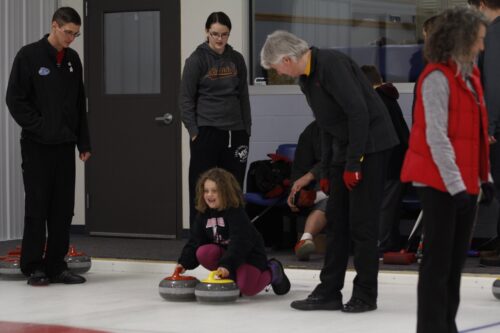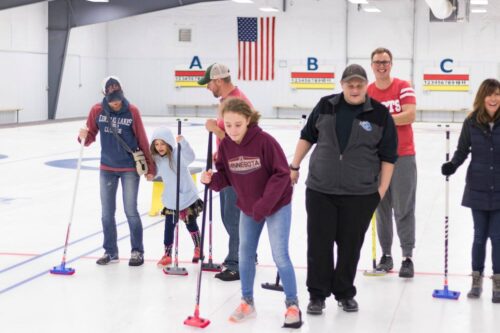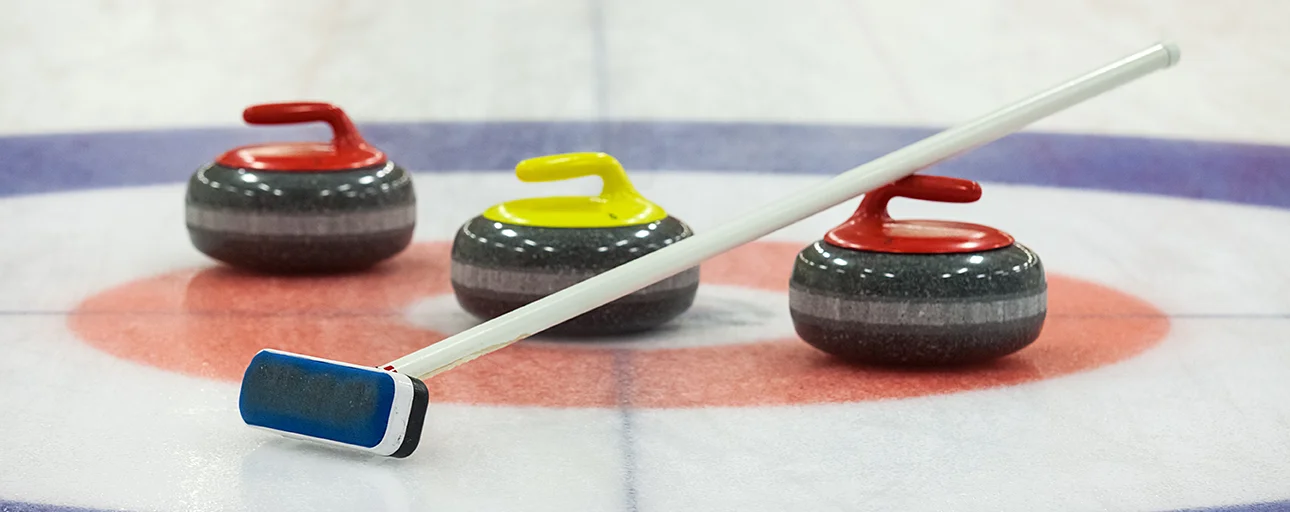chapter 1
THE ICE:
A sheet of curling ice is dimensioned at 138 ft x 14 ft. Unlike hockey ice, the curling surface is carefully groomed by frequent shaving to keep it perfectly level. Before each game, a light spray of water droplets is applied to the surface and immediately freezes in place as a fine pebble. It is on this pebble that curling stones ride easily and react predictably to a player’s delivery.
chapter 2
CURLING STONES:
Curling stones are made from a shock-absorbing granite. Each piece of granite is carefully machined and balanced, and a goose-neck handle is added for the player’s convenience. The result is a standard 42 to 44 pound rock, with a diameter of one foot, and a height of 4.5 inches, not including the handle.
chapter 3
SWEEPING:
Sweeping in front of a running stone accomplishes several things. First, it cleans the path of any debris that may be on the ice that could otherwise alter the stones travel. Secondly, by applying pressure to the broom while sweeping in front of the stone, the ice is slightly warmed, creating less friction between the ice and the stone – this can help the stone travel further than it would have, and it can also affect the curl of the stone
chapter 4
THE TEAM:
A curling team consists of four players: the first player of the group is called the Lead, the second player is appropriately known as the Second, and the third is called (you guessed it) the Third, or the Vice-Skip. The Fourth, known as the Skip, is the captain of the team. He / she directs the strategy of the game and calls the shots. Though the order that stones are delivered typically follows this sequence, there are teams that play with the Skip throwing in a different position.


